Volume 1-8 (2009-16)
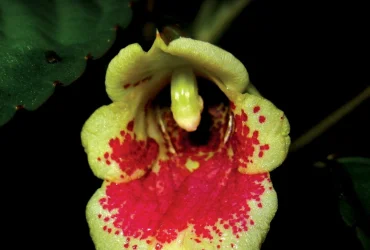 v4i2.82
v4i2.82ISSN: 1800-427X (print)
eISSN: 1800-427X (online)
DOI:10.47605/tapro.v4i2.82
Submitted date: 5 October 2012
Accepted date: 16 October 2012
Published date: 14 November 2012
Pp. 118-119.
A taxonomic note on Impatiens disotis Hooker, 1906 (Family: Balsaminaceae)
E.S.S. Kumar*, A.G. Pandurangan & P.E. Roy
*E-mail: santhoshkumares@gmail.com
The genus Impatiens consists of over 1000 species distributed in the Old World tropics and subtropics. In India, the genus is represented by more than 200 species that occur mainly in three major centers of diversity, Western Himalayas, North East India, and the Western Ghats, of which the state of Kerala harbours 72 species, most of which are rare, endangered or threatened.
Section Editor: James L. Reveal
eISSN: 1800-427X (online)
DOI:10.47605/tapro.v4i2.82
Submitted date: 5 October 2012
Accepted date: 16 October 2012
Published date: 14 November 2012
Pp. 118-119.
A taxonomic note on Impatiens disotis Hooker, 1906 (Family: Balsaminaceae)
E.S.S. Kumar*, A.G. Pandurangan & P.E. Roy
*E-mail: santhoshkumares@gmail.com
The genus Impatiens consists of over 1000 species distributed in the Old World tropics and subtropics. In India, the genus is represented by more than 200 species that occur mainly in three major centers of diversity, Western Himalayas, North East India, and the Western Ghats, of which the state of Kerala harbours 72 species, most of which are rare, endangered or threatened.
Section Editor: James L. Reveal
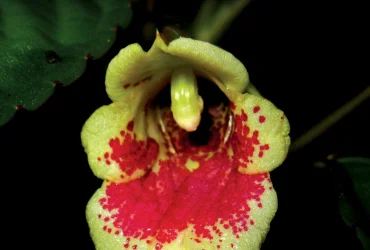 v4i2.81
v4i2.81ISSN: 1800-427X (print)
eISSN: 1800-427X (online)
DOI:10.47605/tapro.v4i2.81
Submitted date: 16 June 2012
Accepted date: 3 July 2012
Published date: 14 November 2012
Pp. 117.
Cannibalism of Indian Palm Squirrel (Funambulus palmarum)
G.M. Edirisinghe* & B.S.A.T.H. Sudasinghe
*E-mail: hsudasinghe@gmail.com
The palm squirrel is one of the common small mammals in Sri Lanka and the Indian Palm Squirrel (Funambulus palmarum) is the commonest of all being distributed throughout the island. All palm squirrels are essentially herbivores, however diet varies depending on the species. F. palmarum has a broad, opportunistic diet, consuming a range of foods that vary depending on season. Its diet includes nuts, a range of seeds, fruits, flowers, young shoots, barks, lichens and it occasionally eats insects such as termites and beetles.
Section Editor: Colin A. Chapman
eISSN: 1800-427X (online)
DOI:10.47605/tapro.v4i2.81
Submitted date: 16 June 2012
Accepted date: 3 July 2012
Published date: 14 November 2012
Pp. 117.
Cannibalism of Indian Palm Squirrel (Funambulus palmarum)
G.M. Edirisinghe* & B.S.A.T.H. Sudasinghe
*E-mail: hsudasinghe@gmail.com
The palm squirrel is one of the common small mammals in Sri Lanka and the Indian Palm Squirrel (Funambulus palmarum) is the commonest of all being distributed throughout the island. All palm squirrels are essentially herbivores, however diet varies depending on the species. F. palmarum has a broad, opportunistic diet, consuming a range of foods that vary depending on season. Its diet includes nuts, a range of seeds, fruits, flowers, young shoots, barks, lichens and it occasionally eats insects such as termites and beetles.
Section Editor: Colin A. Chapman
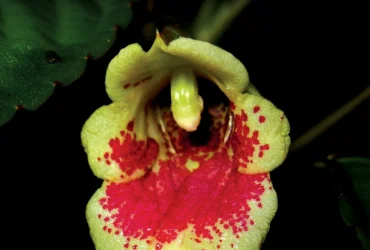 v4i2.80
v4i2.80ISSN: 1800-427X (print)
eISSN: 1800-427X (online)
DOI:10.47605/tapro.v4i2.80
Submitted date: 29 May 2012
Accepted date: 10 August 2012
Published date: 14 November 2012
Pp. 112–116.
Rhesus macaque and associated problems in Himachal Pradesh - India
V. Singh* & M.L. Thakur
*E-mail: proliterate@yahoo.com
Conflict between humans and primates is common and increasing. Of the nearly 225 living species of nonhuman primates, three Indian species (i.e., rhesus macaque (Macaca mulatta), bonnet macaque (Macaca radiata) and the hanuman langur (Semnopithecus entellus) have become urbanized. Out of these, rhesus macaques and hanuman langur share food and space with humans in rural and urban areas and are often reported in conflict with humans. Conflicts often occur when these primates raid crops of farmers
Section Editors: Colin Chapman & Lee Harding
eISSN: 1800-427X (online)
DOI:10.47605/tapro.v4i2.80
Submitted date: 29 May 2012
Accepted date: 10 August 2012
Published date: 14 November 2012
Pp. 112–116.
Rhesus macaque and associated problems in Himachal Pradesh - India
V. Singh* & M.L. Thakur
*E-mail: proliterate@yahoo.com
Conflict between humans and primates is common and increasing. Of the nearly 225 living species of nonhuman primates, three Indian species (i.e., rhesus macaque (Macaca mulatta), bonnet macaque (Macaca radiata) and the hanuman langur (Semnopithecus entellus) have become urbanized. Out of these, rhesus macaques and hanuman langur share food and space with humans in rural and urban areas and are often reported in conflict with humans. Conflicts often occur when these primates raid crops of farmers
Section Editors: Colin Chapman & Lee Harding
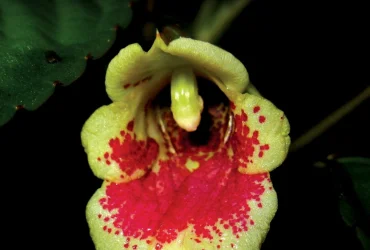 v4i2.79
v4i2.79ISSN: 1800-427X (print)
eISSN: 1800-427X (online)
DOI:10.47605/tapro.v4i2.79
Submitted date: 14 May 2012
Accepted date: 26 July 2012
Published date: 14 November 2012
Pp. 108–111.
Red Giant Flying Squirrel (Petaurista petaurista) in Assam, India
P.C. Ray, A. Kumar, J. Biswas, N. Das, A. Sangma, K. Sarma & M. Krishna
*E-mail: parimalcray@gmail.com
Red Giant Flying Squirrel (Petaurista petaurista) is widely distributed throughout Asia in habitat types including moist evergreen broadleaf forest, temperate forest, and scrub forest in both lowlands and montane areas. It is categorized as Least Concern on the IUCN Red List. Hitherto, no systematic studies have been done on P. petaurista in India. We assessed the density of individuals and habitat selection of this species in different habitat types experiencing various degrees of disturbance. We conducted our study in the Jeypore Reserve Forest (JRF; 108 km2) of Assam, India (27° 06’-27°16’ N, 95° 21’-95° 29’ E; 120-1600 m a.s.l), a rainforest patch of the Eastern Himalayan biodiversity hotspot region
Section Editor: Vincent Nijman
eISSN: 1800-427X (online)
DOI:10.47605/tapro.v4i2.79
Submitted date: 14 May 2012
Accepted date: 26 July 2012
Published date: 14 November 2012
Pp. 108–111.
Red Giant Flying Squirrel (Petaurista petaurista) in Assam, India
P.C. Ray, A. Kumar, J. Biswas, N. Das, A. Sangma, K. Sarma & M. Krishna
*E-mail: parimalcray@gmail.com
Red Giant Flying Squirrel (Petaurista petaurista) is widely distributed throughout Asia in habitat types including moist evergreen broadleaf forest, temperate forest, and scrub forest in both lowlands and montane areas. It is categorized as Least Concern on the IUCN Red List. Hitherto, no systematic studies have been done on P. petaurista in India. We assessed the density of individuals and habitat selection of this species in different habitat types experiencing various degrees of disturbance. We conducted our study in the Jeypore Reserve Forest (JRF; 108 km2) of Assam, India (27° 06’-27°16’ N, 95° 21’-95° 29’ E; 120-1600 m a.s.l), a rainforest patch of the Eastern Himalayan biodiversity hotspot region
Section Editor: Vincent Nijman
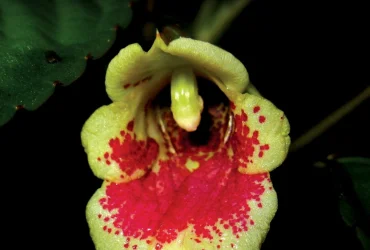 v4i2.78
v4i2.78ISSN: 1800-427X (print)
eISSN: 1800-427X (online)
DOI:10.47605/tapro.v4i2.78
Submitted date: 26 March 2012
Accepted date: 28 October 2012
Published date: 14 November 2012
Pp. 105–107.
Carapacial scute anomalies of star tortoise (Geochelone elegans) in Western India
Raju Vyas*
*E-mail: razoovyas@hotmail.com
The basic taxonomy and classification of reptile species and genera often use pholidotic characters. Despite that each species has a standard pattern, there are always deviant individuals in terms of scale number, shape, size, or color. Turtles are excellent models for the study of developmental instability because anomalies are easily detected in the form of malformations, additions, or reductions in the number of scutes or scales. The normal number of carapacial scutes in turtles is five vertebrals, four pairs of costals, and 12 pairs of marginals, a pattern known as “typical chelonian carapacial scutation”. Any deviation of vertebral, costal, or marginal scute numbers or their pattern represents an anomaly. Zangerl & Johnson (1957) documented scutation anomalies in 118 species of turtles belonging to seven families, with higher levels of carapace anomalies in aquatic species compared to semi-aquatic and terrestrial species.
Section Editor: Uwe Fritz
eISSN: 1800-427X (online)
DOI:10.47605/tapro.v4i2.78
Submitted date: 26 March 2012
Accepted date: 28 October 2012
Published date: 14 November 2012
Pp. 105–107.
Carapacial scute anomalies of star tortoise (Geochelone elegans) in Western India
Raju Vyas*
*E-mail: razoovyas@hotmail.com
The basic taxonomy and classification of reptile species and genera often use pholidotic characters. Despite that each species has a standard pattern, there are always deviant individuals in terms of scale number, shape, size, or color. Turtles are excellent models for the study of developmental instability because anomalies are easily detected in the form of malformations, additions, or reductions in the number of scutes or scales. The normal number of carapacial scutes in turtles is five vertebrals, four pairs of costals, and 12 pairs of marginals, a pattern known as “typical chelonian carapacial scutation”. Any deviation of vertebral, costal, or marginal scute numbers or their pattern represents an anomaly. Zangerl & Johnson (1957) documented scutation anomalies in 118 species of turtles belonging to seven families, with higher levels of carapace anomalies in aquatic species compared to semi-aquatic and terrestrial species.
Section Editor: Uwe Fritz
Hubungi Kami
The ultimate aim of the journal is to provide an effective medium for communication of the latest and best scientific information.
Copyright © 2020 Taprobanica. All Rights Reserved
Jasa Pembuatan Website by IKT




